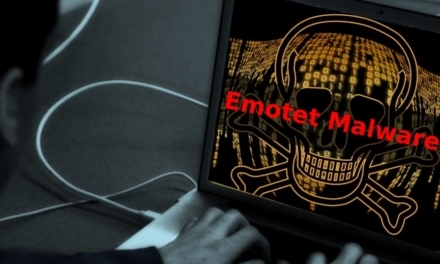Taking preemptive action instead of assuming that digitalization assures cyber safety will determine whether organizations survive cyberattacks (or not).
The world has become increasingly digitalized to the point where it is virtually impossible to work without access to a network or the internet.
At a time when we are still facing the ravages of a global pandemic that made ‘Work-From-Home’ de facto for much of the world, should cybersecurity initiatives and pre-emptive measures to counter ransomware attacks not be de rigueur for businesses?
Why are businesses not doing more to ensure their infrastructural premises are safeguarded from major cyber breaches? When most businesses migrate from conventional on-premises networks to the Cloud, does it not make a case for a streamlined cybersecurity plan that oversees the entire organization’s infrastructural premise even more critically?
In addition to cybersecurity breaches, businesses also face the challenges of network lags that create major delays and downtime, resulting in a massive loss of productivity.
What can businesses do to collate the necessary information and consolidate them into pre-emptive initiatives to help them overcome the security and downtime issues plaguing them? What can be done to conquer the cybersecurity calamities that await many organizations?
Hardware and software compatibility
One of the most serious challenges facing businesses is an outdated mode of infrastructure that limits their ability to adopt advanced forms of software updates that can pre-empt and halt cyber breaches.
Software incompatibility with the organization’s conventional hardware system leaves the overall security hanging in the balance for hackers to enter through any available loophole. This compromises the overall infrastructural premise and makes it challenging to collate data in a shorter period that can pre-empt problems within the system.
Can businesses wait for 45 minutes for an entire system to reboot? Imagine a complete system reboot in the middle of a security breach: this could leave administrators locked out while the whole system is seriously compromised.
Small businesses are even more vulnerable, especially when costs and manpower come into play. More awareness and increased adoption of advanced software can help ward off prospective hackers and oversee system lags. The only way for businesses is to move forward and invest in the right software and tools to protect their security and data.
Embracing the cloud in a divided world
Undoubtedly, more businesses are adopting cloud computing in to facilitate the pandemic-era need for hybrid working.
With demands come challenges. The infrastructure and workforce able to meet cloud adoption among key ASEAN countries are still lagging. Countries such as Indonesia and Malaysia have a digital divide between their urban and rural areas, making access to high-speed internet and network security a huge challenge.
To cater to the resultant hybrid infrastructures built to meet this connectivity divide, a streamlined solution of one singular, cloud-native platform can help.
When businesses are migrating to the cloud, some form of monitoring is still required for on-premises infrastructure. Platforms that can monitor hybrid environments from one base can be cost-effective and significantly increase operational efficiency with less downtime and manpower involved.
Round-the-clock cyber vigilance
Last year, Interpol reported that the increased online dependency during the pandemic globally also fueled new opportunities due to many businesses and people not ensuring that their cybersecurity measures were up to date to withstand attacks from cyber criminals.
This underlines a critical need for businesses to ensure their cyber defenses are regularly updated and enforced. One aspect of this is cybersecurity monitoring that can detect threats in real-time and alert any potential network security risks.
The availability of machine-learning algorithms that work 24/7 also expands the range of options for businesses to be warned about impending problems or issues faced in the system. With more and more businesses moving their operations to the 24/7 cloud, organizations need to employ cloud-native technologies that can manage operations and security.
Choosing a cloud-native platform to detect threats and monitor for breaches and system lags can streamline an organization’s cloud infrastructure. It also enhances operational efficiency with less time spent on conventional security initiatives such as on-premises monitoring, which can resource-heavy.
A matter of choice
With so many solutions available to organizations to preempt data breaches and cyber incidents, organizations have the capability to apply innovative solutions to counter them.
Fight fire with fire? Prop up the infrastructural defenses and ensure the latest software and hardware are in place for maximum operational efficiency? Adopt a singular cloud-native platform to streamline cyber vigilance while increasing operational efficiency? All these countermeasures are already ready and waiting. The choice now is to take action and select an appropriate solution to avoid disaster.


















